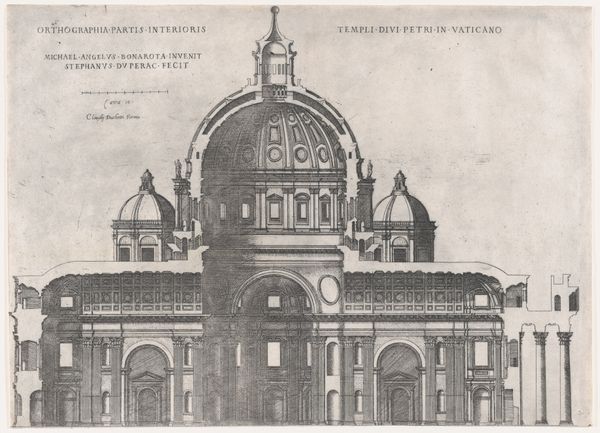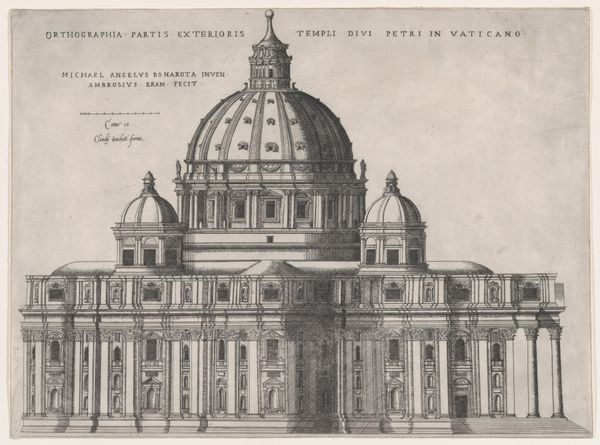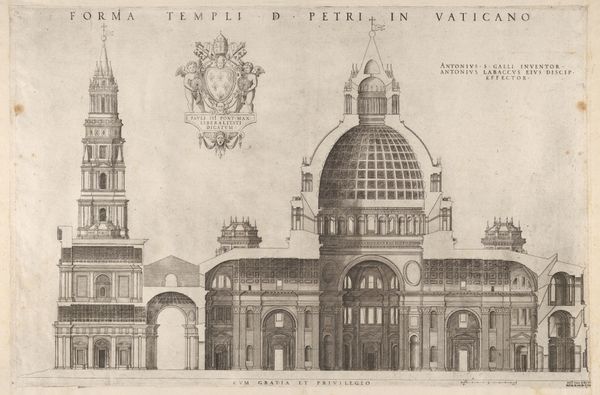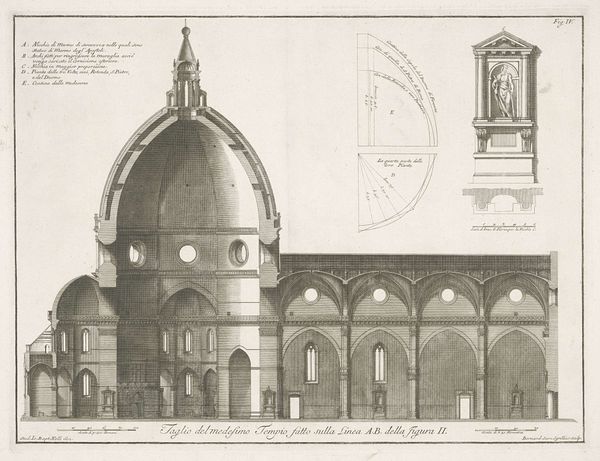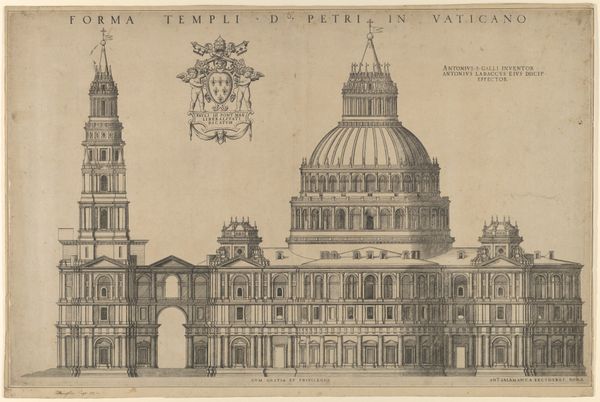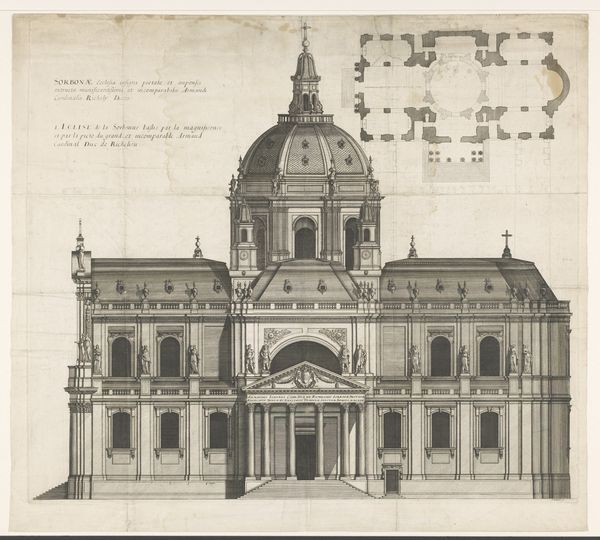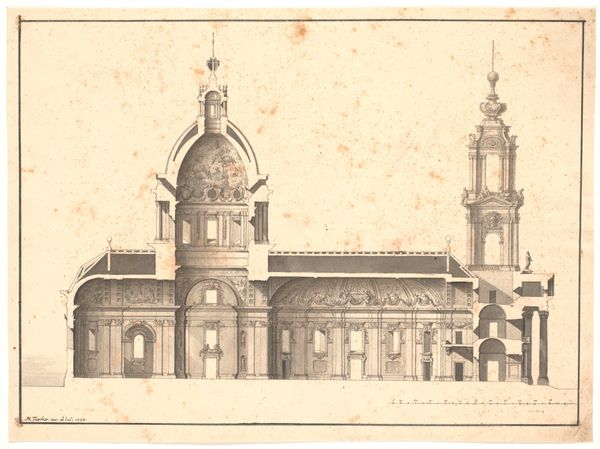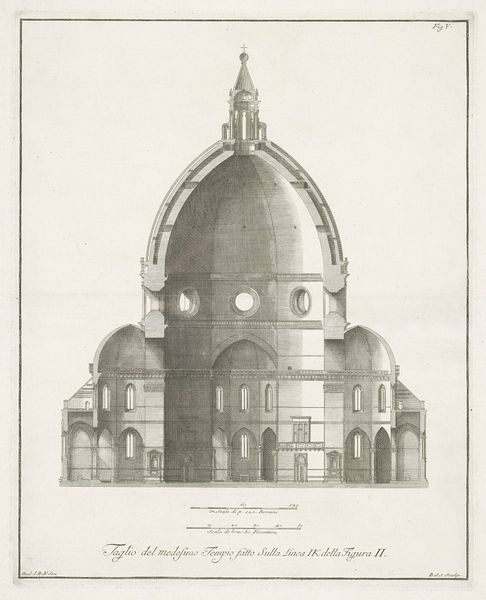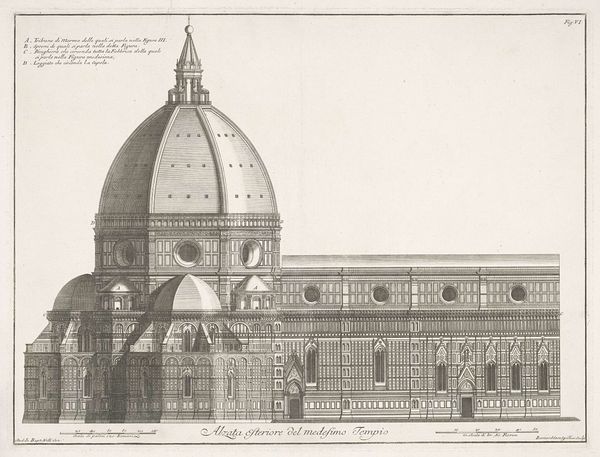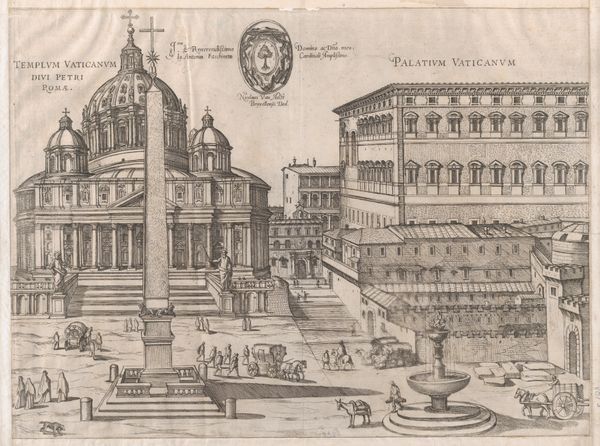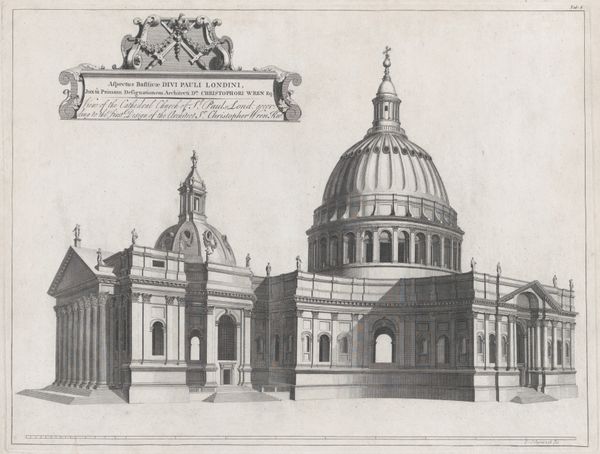
Speculum Romanae Magnificentiae: Longitudinal Section Showing the Interior of Saint Peter's Basilica as Conceived by Michelangelo (Published in 1569) 1551 - 1561
0:00
0:00
drawing, print, intaglio, engraving, architecture
#
drawing
# print
#
intaglio
#
11_renaissance
#
engraving
#
architecture
Dimensions: sheet: 13 1/4 x 18 3/4 in. (33.7 x 47.6 cm)
Copyright: Public Domain
Curator: Up next, we have Étienne Dupérac’s intaglio print from 1569, showcasing a longitudinal section of Michelangelo’s vision for the interior of Saint Peter’s Basilica. Quite the mouthful, I know. Editor: Whoa, it's like a dollhouse version of architectural ambition! Look at that intricate cross-section—it feels both precise and dreamlike, almost… impossible. All those tiny details suggesting the monumentality of it. Curator: Absolutely. The print comes from Dupérac’s “Speculum Romanae Magnificentiae,” which, roughly translated, is the Mirror of Roman Magnificence, it offers this incredible bird’s-eye view, right through the heart of the Basilica as Michelangelo conceived it. Editor: The dome dominates everything, doesn't it? In the history of domes—architectural feats and symbols of power – how much does this visual pre-construction render establish or play into existing narratives? Curator: Well, St. Peter’s itself holds immense symbolic power— the heart of Catholicism— and its very design, a convergence of artistic visions over centuries, tells this. It reflects Rome's historical claim as the center of the Christian world and it visually conveys power to the people, quite literally towering over them. Editor: The symmetry is striking too; there is something so self-assured about it. And the detail—one can only imagine how Dupérac himself experienced St. Peter’s to capture that sense of interiority. It's almost a sacred act. Curator: Indeed. And I think it's interesting to see it captured as a moment of the High Renaissance, which brought a renewed emphasis on clarity, proportion, and ideal forms in art and architecture. The use of intaglio to give depth adds so much to that sensation. Editor: You can practically feel the cool marble and the weight of history pressing down from those arches. Seeing how the light plays inside the space from Dupérac is like walking into a moment suspended in time. Curator: It really speaks to the Renaissance’s vision. The perfectibility of humankind through faith, art, and learning, rendered visible in this one space. What do you make of this now, looking at the totality? Editor: It's funny; knowing what we know *now*, this engraving feels like a monument to faith *in* monuments. This slice of time reveals our aspirations, maybe a tad arrogant—a celebration of artistic prowess— but beautiful and overwhelming, all the same.
Comments
No comments
Be the first to comment and join the conversation on the ultimate creative platform.
